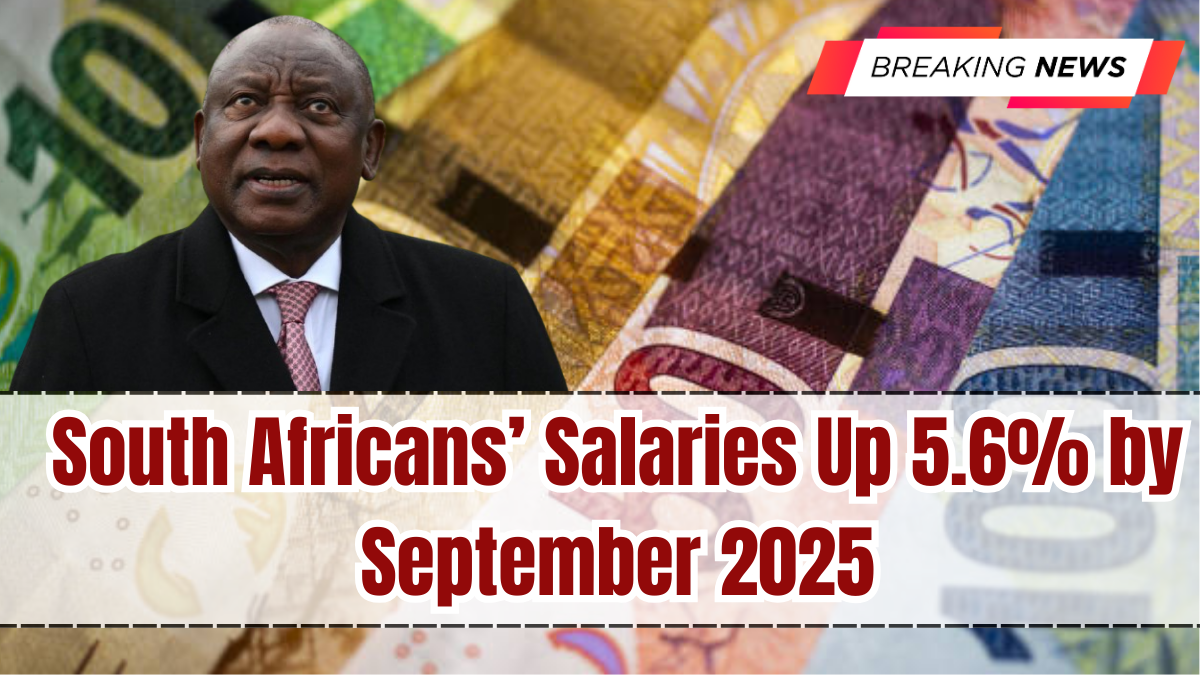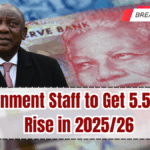South Africa’s workforce received encouraging news in September 2025: the average monthly salary rose by 5.6% compared to September 2024. This increase reflects both adjustments to wages in line with inflation and a recovery in some key industries.
For workers struggling with the rising cost of food, electricity, and transport, the increase provides much-needed breathing room. Although not uniform across all sectors, the fact that wage growth is slightly above inflation shows progress in supporting household incomes.

What the Numbers Show
According to official labour statistics, the average monthly earnings of formally employed South Africans increased from around R26,500 in September 2024 to just over R28,000 in September 2025.
This 5.6% year-on-year rise is significant, especially given South Africa’s challenging economic environment. However, wage growth remains uneven, with certain industries recording far stronger gains than others.
Drivers of the Increase
Several factors have contributed to the September 2025 salary rise:
-
Inflation adjustments: Many companies increased wages in line with consumer price inflation, which averaged about 5% this year.
-
Collective bargaining: Unionised industries such as mining, transport, and manufacturing achieved higher annual increases through negotiations.
-
Skills shortages: Professions in IT, finance, and engineering saw above-average salary offers due to high demand for skilled workers.
-
Government wage agreements: Public sector employees—particularly teachers, healthcare workers, and police—benefited from multi-year wage deals.
Together, these factors lifted the national average, although lower-paid workers in informal or casual employment continue to face challenges.
Impact on Workers
For the average employee, the increase equates to about R1,500 more per month. While this may not fully cover rising costs, it does help offset price hikes in essentials such as groceries, utilities, and transport.
For middle-income families, the increase provides some relief with school fees, household bills, and debt repayments. For lower-income workers, however, the small nominal rise often feels insufficient, especially when transport and food inflation remain higher than the national average.
Another benefit of higher wages is that workers contribute more to pensions, UIF, and other protections, improving long-term financial security.
Sector-by-Sector Breakdown
Different industries showed varying levels of salary growth in September 2025:
-
Finance and business services: Above 7% growth, driven by demand for professional skills.
-
Mining: Around 6% growth, supported by commodity demand and strong union bargaining.
-
Public sector: About 5.5%, consistent with the government wage agreement.
-
Retail and hospitality: Below 5%, as businesses faced higher operating costs and slower recovery.
-
Construction and agriculture: Modest increases, often tied to seasonal work and tight margins.
This uneven growth highlights the ongoing wage gap between high-skilled and low-skilled sectors.
Comparison With Inflation
South Africa’s inflation rate hovered around 5% in mid-to-late 2025. With wages up by 5.6%, average salaries are only slightly ahead of inflation, meaning most workers have experienced a small real gain in purchasing power.
But the impact varies by income group. Lower-income households spend more on food and transport, categories where inflation is typically higher. For them, the wage increase may still feel inadequate.
Challenges That Remain
Despite the positive trend, several challenges persist:
-
High unemployment: At nearly 32%, unemployment remains among the highest globally, limiting the overall impact of salary increases.
-
Wage inequality: Higher earners saw stronger increases, widening the gap with lower-income workers.
-
Job insecurity: Many workers remain in temporary or contract roles with limited bargaining power.
-
Rising costs: Persistent increases in fuel, electricity, and healthcare continue to eat into household budgets.
Addressing these issues will require economic growth, skills development, and stronger labour protections.
Why the Increase Matters
Wage growth is more than just numbers—it has ripple effects across the economy.
-
For households, higher salaries improve financial security and reduce reliance on debt.
-
For businesses, increased consumer spending supports demand for goods and services.
-
For government, higher wages mean more tax revenue to fund public services and grants.
If maintained over time, steady wage growth can help reduce poverty and inequality, provided it reaches lower-income groups.
Preparing for the Future
Workers and households should use the extra income wisely. Financial experts suggest:
-
Saving part of the increase in emergency funds.
-
Paying down high-interest debt to free up future income.
-
Boosting retirement contributions for long-term security.
-
Budgeting carefully, as inflation pressures are likely to remain.
For policymakers, the focus will be on sustaining wage growth while reducing unemployment. Job creation, education, and training remain key to building a more inclusive labour market.
FAQs
How much did salaries rise in South Africa in 2025?
Average monthly earnings grew by 5.6% between September 2024 and September 2025.
What is the new average salary?
It rose from about R26,500 to just over R28,000 per month.
Which sectors saw the biggest increases?
Finance, IT, and mining recorded the strongest growth, while retail and hospitality lagged.
Did salary increases beat inflation?
Yes, slightly. With inflation around 5%, the 5.6% salary rise meant small real gains.
Does this solve wage inequality?
No. High earners benefited more, while low-income workers still face cost-of-living pressures.
Click here to know more.




